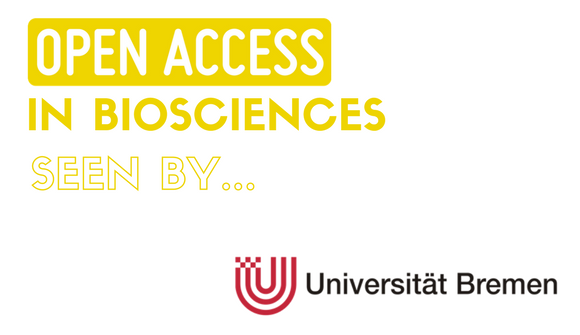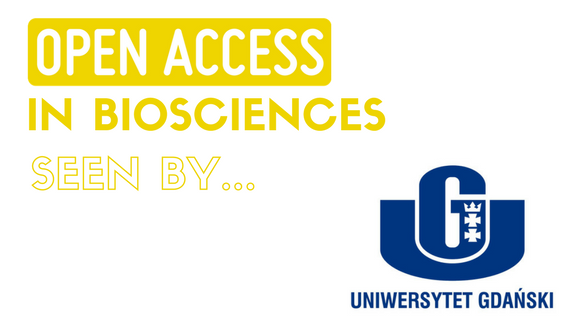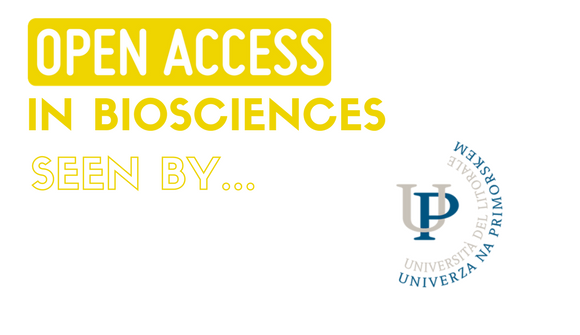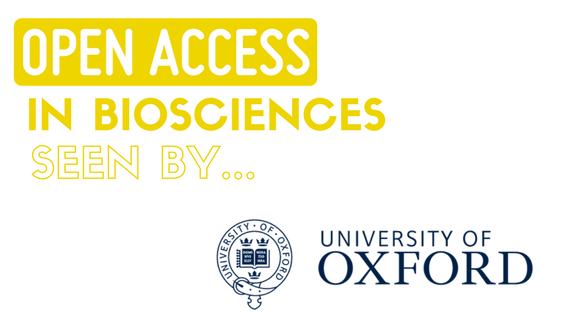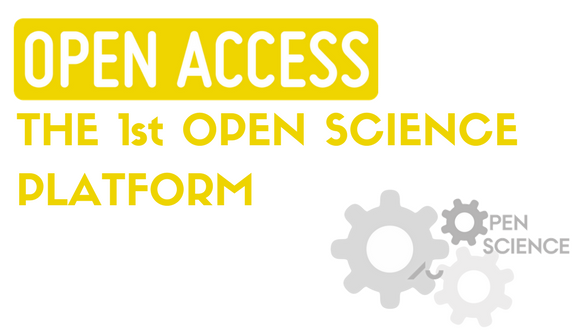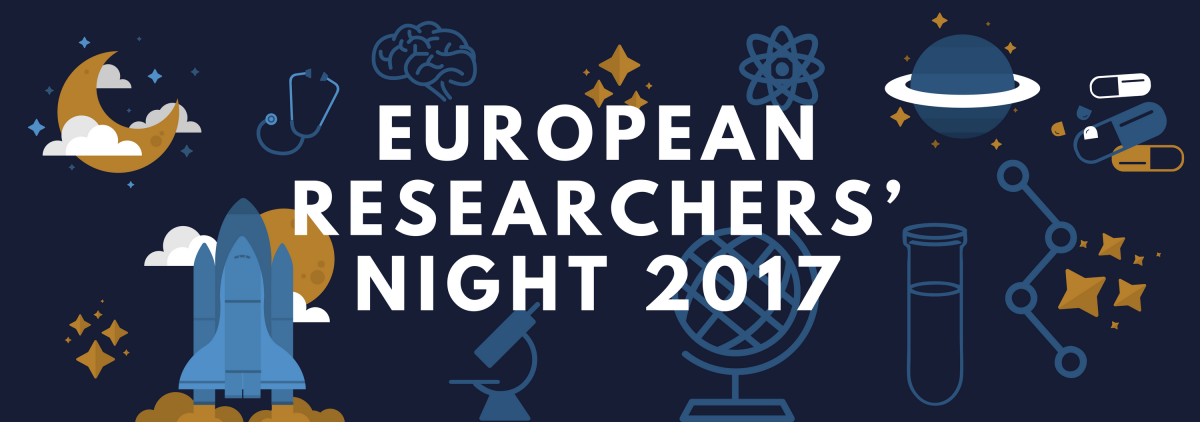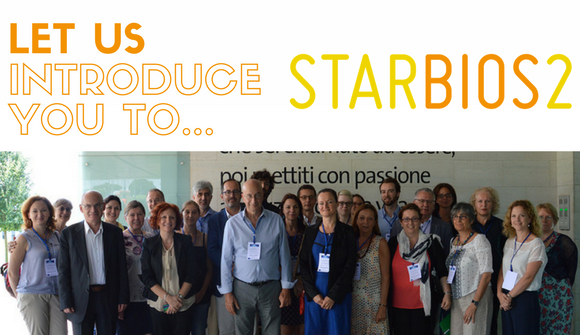How do you understand Open Access in biosciences research? Besides scientific publications of research results, the free access to databases for sequences of bio molecules like DNA, RNA and proteins is crucial for the field of biosciences. Whereas the access to most genomic databases is already free, the Open Access to research publications is still on the way. “If I saw further than other men it was because I was standing on the shoulders of giants.” This quotation from Isaac Newton shows that research is always based on the results of previous research. The access to scientific publications is a prerequisite for any research activity. Open Access provides the free and unrestricted access to scientific publications via the internet. This is not just a benefit for the research community itself, but also for the society as a whole: every interested person has access to scientific research results. What are the current standards and actions to achieve better Open Access in your University and in your country? The “Berlin Declaration on Open Access to Knowledge in the Sciences and Humanities” from 2003 is one important milestone in establishing Open Access in the German science system. All big science institutions in Germany – e. g. Max Planck Society, Helmholtz-Association and German Research Foundation– are among the first who signed in the declaration. Up to date more than 550 German and international institutions have signed in and admit to support and foster Open Access. The University of Bremen sets up an Open Access …
Open Access in Biosciences Research, Gdansk University
How do you understand Open Access in biosciences research? Open Access (OA) is providing a free-of-charge access to research results – scientific publications – via online access. Individuals and institutions that would otherwise not easily have access to research findings gain knowledge about new discoveries when these information are disseminated in OA. This increases the benefit for society: research findings can be accessed, used and reused, further developed by scientists from different backgrounds and disciplines as well as by non-scientists. What are the current standards and actions to achieve better Open Access in your University and in your country? The Polish Ministry for Science and Higher Education supports OA and recommends its implementation by research institutions. Several reports have been published on the state-of-the-art of OA in Poland. There are units and initiatives strongly supporting the development of OA in Poland, such as Platform for Open Science, Coalition for Open Education. Recently, the University of Gdańsk has adopted its policy on OA. What are you aiming for with the implementation of the STARBIOS2 actions towards better Open Access standards for your institute? Our goal is to support an institution-wide strategy towards improved OA to the results worked out by our scientists. We believe that OA is only possible with the joint efforts of authors, editors, librarians, supporting staff, and funders. In our project activities we focus on rising awareness among scientists on the importance and benefits of OA. At the same time, we conduct actions aimed at educating authors …
Open Access in Biosciences at the University of Primorska
How do you understand Open Access in biosciences research? The open access publications enable the new forms of scientific communication, networking and transfer of knowledge. In the so-called “Open Science” movement, teachers and researchers share their research results and information in real time with each other and with the public. With open access, this information can also be used by those persons and institutions that have not previously access to research results and could not finance such access. Scientists and academics are not the only groups that can benefit from open access publications. The demand from the business sector and individual citizens for access to research results in the form of data in publications is also important. What are the current standards and actions to achieve better Open Access in your University and in your country? The departments of biosciences (Biodiversity, Biopsychology and Applied sciences), at the University of Primorska, aim to raise awareness for accessing and sharing research results and publications. Introduction of Open Access policy is relatively new for our University and also to the other research institutions in Slovenia. A brief overview of Open Access situation is presented on the Open Science website. The Government of the Republic of Slovenia adopted the National Strategy of Open Access to Scientific Publications and Research Data in Slovenia 2015-2020 in September 2015 (ROARMAP record) and the action plan in May 2017. What are you aiming for with the implementation of the STARBIOS2 actions towards better Open Access standards for your …
Open Access in Biosciences, seen by the University of Oxford, UK
How do you understand Open Access in biosciences research? Open access is a way of eliminating permission and price barriers in order to guarantee free access to biosciences research publications. Open access means that the public can access your work. This facilitates greater exposure and higher citation rates because researchers from other countries can view your work. What are the current standards and actions to achieve better Open Access in your University and in your country? The University of Oxford is very committed to open access and has a webpage dedicated to explaining the University’s position: http://openaccess.ox.ac.uk/ – policy and information. As researchers are actively encouraged to publish open access, this requires a collaborative project that involves many departments such as Research Services, Bodleian Libraries, IT Services, Planning and Resource Allocation Section, Oxford University Press, and Academic Divisions. There is also an open access policy in institutions of higher education throughout the United Kingdom due to the Research Excellence Framework (REF). In order to receive higher education funding (HEFCE), REF requires journal articles to be made Open Access. The aim of the policy is to increase the amount of UK research which is freely available – and more articles open access means higher REF scores in 2021. What are you aiming for with the implementation of the STARBIOS2 actions towards better Open Access standards for your institute? The University of Oxford is a leading institution in open access and led a strong communication strategy to engage researchers. We aim to …
The 1st Open Science platform launched by Aarhus University, Denmark
An innovative free of charge tool Along with a number of leading Danish industrial companies, Aarhus University has opted out of the academic and patenting rat race in a new collaboration on basic research of relevance to industry. Researchers and companies from all over Denmark have the opportunity to publish their results and data on the innovative Open Science platform, where the information is available free of charge to everyone interested. Established with funds (DKK 2.5 million) from the Danish Industry Foundation, the platform combines basic research with industrial innovation, ensuring that industry and universities get greater benefits from each other’s research and technology. The Open Science platform breaks the barriers that make it difficult and expensive for companies to gain access to the part of basic university research that is most relevant for them. It also addresses a number of major challenges facing basic research, in particular in Denmark, where both researchers and grant providers focus increasingly on safe bets. Why creating an Open Science platform? The aim of the Open Science platform is to have university researchers and companies collaborate to create basic new knowledge that is available to everyone – and which no one may patent. However, everyone is subsequently free to use the knowledge to develop and patent their own products. The interest for such an idea of collaborating in a patent-free zone is enormous among companies that otherwise use substantial resources on protecting their intellectual property rights. The first platform focuses on smart materials and …
Meet scientists on European Researchers’ Night 2017
The European Researchers’ Night (NIGHT) is a public event dedicated to popular science and fun learning that occurs each year since 2005, on the last friday of September. More than 30 European countries, and 300 cities are involved in that event! What happens during the European Researchers’ Night? On this night visitors get the opportunity to meet researchers from all disciplines, in unusual and scenic spaces. The event invites you to meet science heroes, researchers from all scientific disciplines whose fascinating work can, and will, change our lives. This is a unique opportunity to endorse these heroes’ cloak by making you a researcher for the night, discovering countless scientific disciplines, and above all, have fun! All these events will take place on Friday 29 September in several hundred cities throughout Europe and in several neighboring countries. What is the goal of the European Researchers’ Night? The main objective of the European Researchers’ Night (NIGHT) is to increase research and innovation awareness, and to bring researchers closer to the general public. It showcases what researchers really do for society, as well as promoting research careers to young people. Agrobioinstitute (ABI) & the European Researchers’ Night! This year, on Friday, September 29th, ABI will take part of the NIGHT. You will be able to meet scientists from: Agrobioinstitue (ABI), Sofia, Agricultural Academy Institute of cryobiology and food technology (ICFT), Sofia, Academy Institute of ornamental plants (IOP), Negovan, Agricultural Academy Biological faculty (BF), Sofia University About ABI Agrobioinstitute is one of the most dynamic research structures …
Let us introduce you to STARBIOS2…
Vittorio Colizzi, coordinator of STARBIOS2 project, is Full professor of General Pathology and Immunology, and Director of UNESCO Chair in Biotechnology and Bioethics at University of Rome “Tor Vergata”. He will talk about the aim of the project and the concept of Responsible Research and Innovation (RRI). 1. How would you describe the concept of Responsible Research and Innovation? In short, RRI is an inclusive approach to research and innovation (R&I). It aims to better align both the process and outcomes of R&I with the values, needs and expectations of European society, and to ensure that societal actors work together during the whole research and innovation process. 2. Why is RRI important for the advancement of the research? Research and innovation have never been carried out in isolation from the social, political and economic context. But the RRI helps us to highlight an important fact: one of the main risk, for European research is its inadequate connection with society. The loose connection between research and society could make European research unable to address the key development problems, unable to exploit its potential for innovation and competitiveness in the global market, and socially isolated or contested (see the case of the attitude of many citizens towards the vaccinations). For these reasons, RRI is important, because it focuses on the subject of a stronger R&I, and even more relevant with respect to society; a society of which R&I itself is an integral part. 3. Could you describe the 5 key issues …




